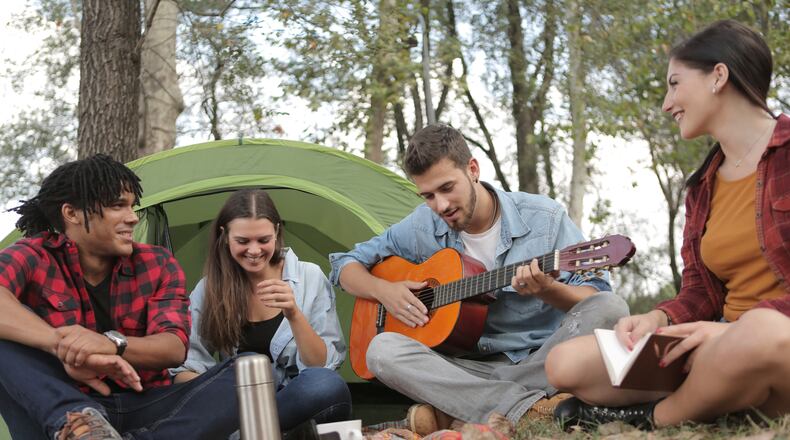These new rules include reduced occupancy of each campsite, closing gathering places and dealing with both customers and staff members.
For campers:
- Only one family household per campsite, with a limit of 10 people or fewer per site
- Use social distancing in all areas of the campgrounds
- Do not gather in groups
- Practice self-contained camping when possible
>>Which Ohio sports get green light to resume? Here's what you need to know
For campground operators:
Communication
- Post information throughout the campgrounds to remind campers to take steps to prevent spreading the coronavirus, such as:
- staying home if they are sick,
- using social distancing,
- not gathering in groups,
- wearing masks when interacting with others
- washing hands
Restroom, showerhouse and laundry facilities
- Make sure there are functional toilets
- Clean and sanitize public areas and restrooms in morning and evening, and more during peak usage times, using EPA-registered disinfectants and focusing on high-touch surfaces like counters, toilets, faucets and light switches
- Fully stock hand washing supplies when cleaning restroom
- Provide hand sanitizer where water is not available
- Limit the number people in the facilities based on the facility size and current social distancing guidelines
Closures, modifications and limitations
- Close all non-essential areas where people could congregate like pavilions, pools and splash pads. These can reopen as new orders ease current prohibitions
- Operate snack bars and restaurants according to current DOH orders
- Either close self-serve food stations or have them be operated by employees
- Enforce social distancing guidelines at RV water filling, propane filling and dump stations, and disinfect pumps each day. Pumps should also be sanitized multiple times per day based on peak usage.
- Do not allow non-registered campers
Customer interactions, sales and rentals
- Install barriers and protective shields to distance staff and customers
- Post revised occupancy numbers in accordance with current guidelines
- Mark floors inside building for 6-foot standing areas or one-way traffic
- Clean and disinfect high-use areas multiple times per day
- Sanitize all rental equipment after use
- Arrange any seating areas at safe distances from one another
Outdoor distancing
- In high-traffic areas, mark 6-foot spacers
- In areas with a lot of cross traffic, direct pedestrian traffic to enter/exit locations in specific ways or indicate one-way traffic wherever possible
Staff and vendors
- Be as flexible as possible with staff attendance and sick leave
- Have employees perform a daily symptom assessment before reporting for work
- Require employees who have symptoms to stay home and perform daily assessments before returning to work
- Provide proper PPE including masks and gloves, and require employees use them
- Allow ample opportunities for employees to wash their hands
- Clean and disinfect employee vehicles, golf carts, keys, tools, break rooms, bathrooms and other common areas at the end of each shift
- Clean and disinfect non-as signed items after each employee uses it
- Where possible use staggered employee entry, work in assigned teams, vary arrival and leaving times and stagger breaks to avoid grouping
In Other News
1
Kettering’s Maddy Westbeld visits her old school
2
Miamisburg councilman launches bid for 40th House District
3
Defense bill with record $901B in military spending advances with new...
4
Senator’s visit highlights United Grinding’s apprenticeship efforts
5
36 books removed, 95 restricted in Bellbrook school libraries
About the Author
